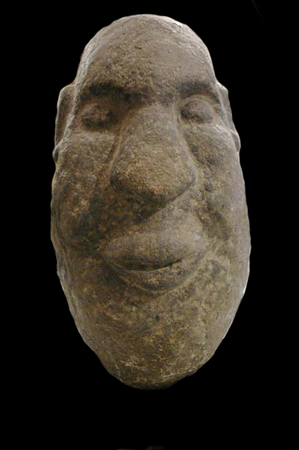Yoruba Stone Janiform Head, 500 BCE - 500 CE
Basalt
8
PF.2297
Further images
The Yoruba are the largest ethnic group in Africa and are the most prolific of its art-producing peoples. Their art reflects complex systems of religion, social organization, and government, all...
The Yoruba are the largest ethnic group in Africa and are the most prolific of its art-producing peoples. Their art reflects complex systems of religion, social organization, and government, all of which are implemented by special voluntary associations. Moreover, Yoruba culture has a rich spiritual philosophy that has its ancient roots in Nigeria. Such spiritual ideas are often conveyed in Yoruba arts, giving us clues to the ancient thoughts. This archeological stone sculpture of a janiform head is a fine example that suggests the ancient concepts. Most likely a double-headed deity, this oval shaped stone sculpture depicts two faces. The faces are carved to show the fleshiness of the features, for example the large cheeks and the fleshy mouths. The one set of highly stylized ears are positioned close by the other pair, visually connecting the two heads that are facing away. Such a janiform sculpture perhaps expresses the Yoruba conception of self as having exterior (Ode) and interior--the "inner head"--(Inu) aspects. Such concept of divided individuality, passed down from generation to generation, most likely is valued in present Nigeria as it has been for centuries. This beautifully carved stone sculpture is a marvelous evidence of ancient philosophy that is still thought of and discussed today.





